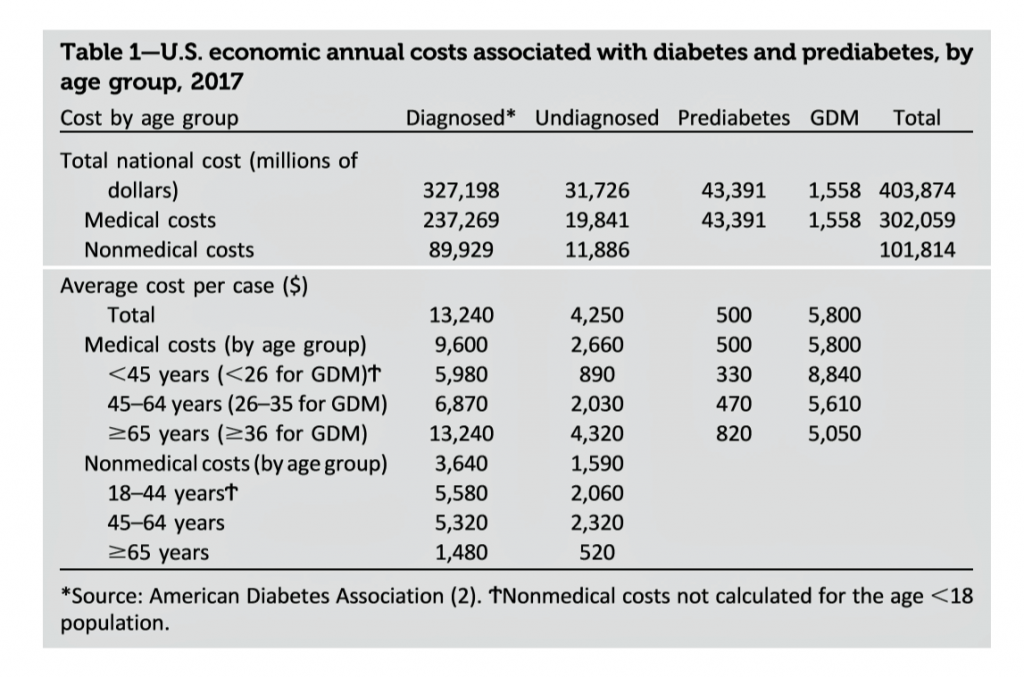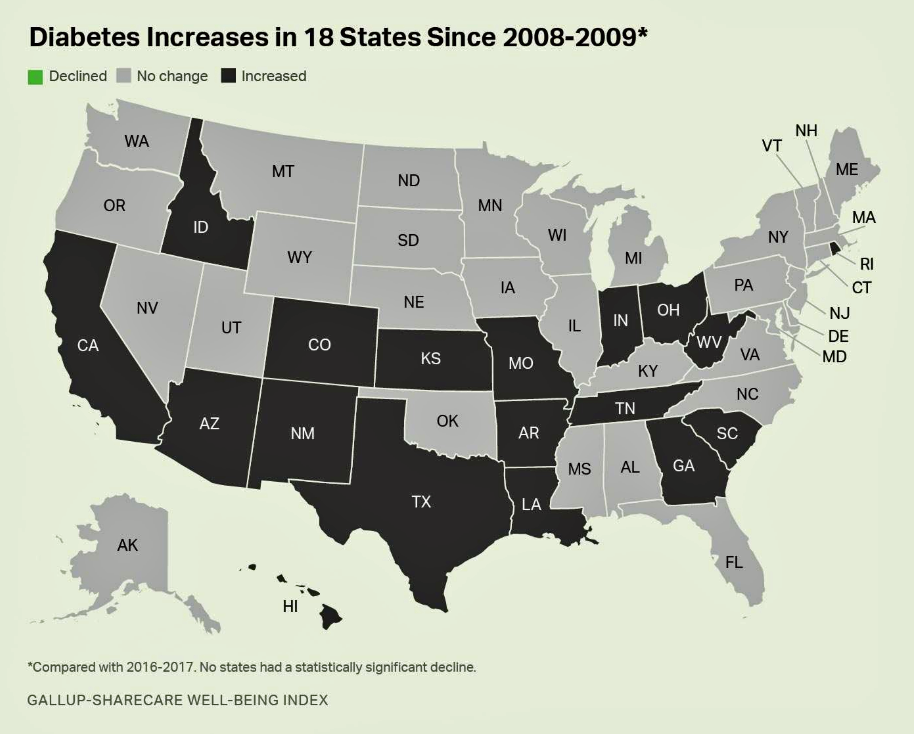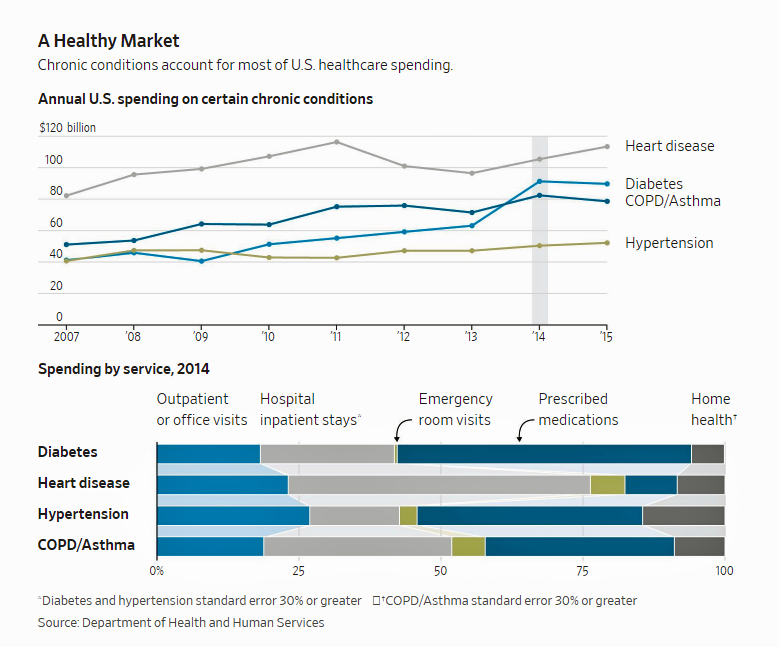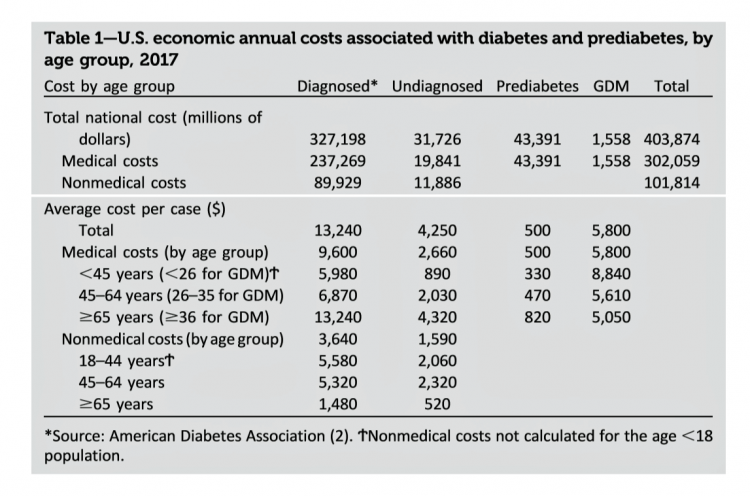Pharmaceutical company executives are testifying in the U.S. Congress this week on the topic of prescription drug costs.
One of those medicines, insulin, cost a patient $5,705 for a year’s supply in 2016, double what it cost in 2012, according to the Health Care Cost Institute. Know that one of these insulin products, Lilly’s Humalog, came onto the market in 1996.
In typical markets, as products mature and get mass adoption, prices fall. Not so insulin, one of the many cost components in caring for diabetes. But then prescription drug pricing doesn’t conform with how typical markets work in theory.

Prescription drugs are but one cost driver in caring for diabetes, which are quantified in The Economic Burden of Elevated Blood Glucose Levels in 2017: Diagnosed and Undiagnosed Diabetes, Gestational Diabetes, and Prediabetes, published in Diabetes Care from the American Diabetes Association in April 2019.
The top line of this study is that the economic burden of diabetes overall was $404 billion in 2017. This was comprised of $327 bn for diagnosed diabetes, $31.7 bn for undiagnosed diabetes, $43.4 bn for prediabetes, and $1.6 bn for gestational diabetes.
The diabetes economy equated to $1,240 for every American in 2017.
Here is the people story underneath these numbers: in 2017, 24.7 million Americans had diagnosed diabetes, 7.5 were undiagnosed with the condition, and 86 million people were considered pre-diabetic.
For families with a member with diabetes, the household economic burden was $3,150, or 5.1% of family income.
The study analyzed medical claims for millions of patients, both commercially insured and enrolled in Medicare.
 Health Populi’s Hot Points: There are two key hot points for me in this story: the first is the opportunity to prevent the onset of diabetes among the millions of Americans who are “pre-diabetic.”
Health Populi’s Hot Points: There are two key hot points for me in this story: the first is the opportunity to prevent the onset of diabetes among the millions of Americans who are “pre-diabetic.”
First, note the map from Gallup’s recent study on the state of diabetes in the USA. In no state did the rate of diabetes decline in the ten years between 2008 and 2018. The states shaded black were those where the rate of diabetes grew, and in the grey-shaded states, stayed relatively flat. Note that even in states where Gallup’s research had identified “healthier” outcomes, like Colorado, the rate of diabetes grew.
This condition is amenable to lifestyle choices and changes that are, on their face, pretty basic: eating nutritiously and in appropriate portions, moving around more physically, getting good sleep, staying positive and active in the world.
Public policies that bolster nutrition, physical activity, work and skills training, and expanding access to and availability of primary and mental health care would be helpful.
So would rational drug pricing for the key supply item people with diabetes need: insulin.
“No one should die waiting for insulin” insists the title of an op-ed in today’s New York Times. Maris Kreizman muses, “I used to dream of a cure. Now I just want medicine people can afford.”
As pharma industry execs testify this week on Capitol Hill about how prescription drugs get priced and distributed, the overwhelming majority of Americans believe that drug prices are too high and require government regulation. This issue and broad popular consensus has been a no-brainer since President Trump campaigned to be President, and was a pillar in his early policy visions.
Here’s a link to his interview with TIME magazine when he said, just days before taking his U.S. Presidential oath. He said, “I’m going to bring down drug prices. I don’t like what’s happening to drug prices.” In this vein at this time, he went darker in another interview on January 11, 2017, saying that, “drug companies are getting away with murder” regarding the pricing of medicines.
The President and Secretary Alex Azar have the opportunity to join forces with House Speaker Nancy Pelosi, who has reached out to address this majority-supported issue.
If prescription drug pricing can’t get resolved in this immediate term before the 2020 Presidential election, the industry could face much harsher legislative conditions should the Senate turn blue and the White House be led by a Democrat.
There are some medicines that are basic to human life on a daily basis: insulin and epinephrine are among these. And these are the very substances that are motivating mainstream Americans to learn more and understand prescription drug pricing on a very personal, visceral level.






 I am so grateful to Tom Lawry for asking me to pen the foreword for his book, Health Care Nation,
I am so grateful to Tom Lawry for asking me to pen the foreword for his book, Health Care Nation,  I love sharing perspectives on what's shaping the future of health care, and appreciate the opportunity to be collaborating once again with Duke Corporate Education and a global client on 6th May. We'll be addressing some key pillars to consider in scenario planning such as growing consumerism in health care, technology (from AI to telehealth), climate change, and trust -- the key enabler for health engagement or dis-engagement and mis-information. I'm grateful to be affiliated with the corporate education provider
I love sharing perspectives on what's shaping the future of health care, and appreciate the opportunity to be collaborating once again with Duke Corporate Education and a global client on 6th May. We'll be addressing some key pillars to consider in scenario planning such as growing consumerism in health care, technology (from AI to telehealth), climate change, and trust -- the key enabler for health engagement or dis-engagement and mis-information. I'm grateful to be affiliated with the corporate education provider  Thank you FeedSpot for
Thank you FeedSpot for